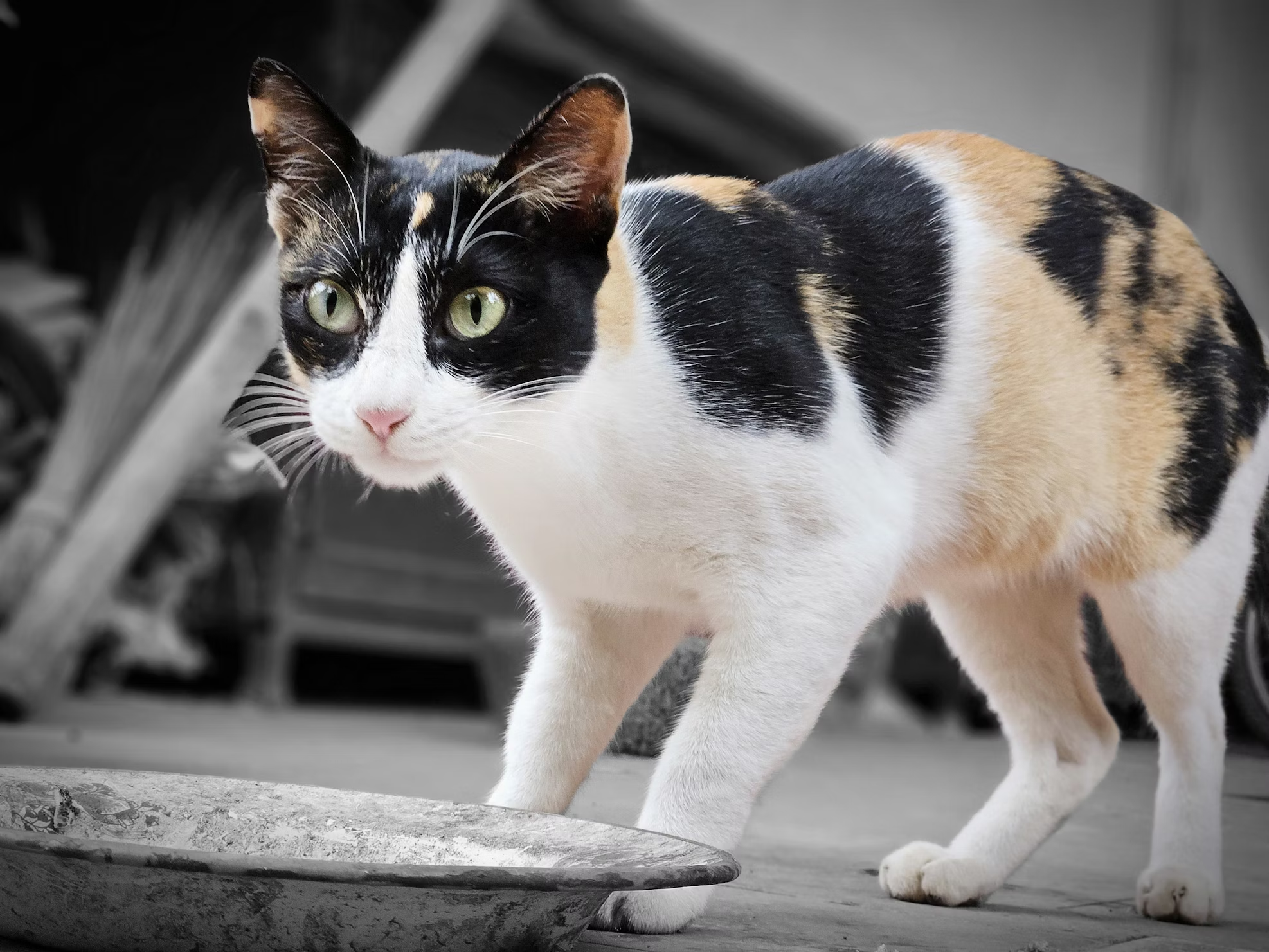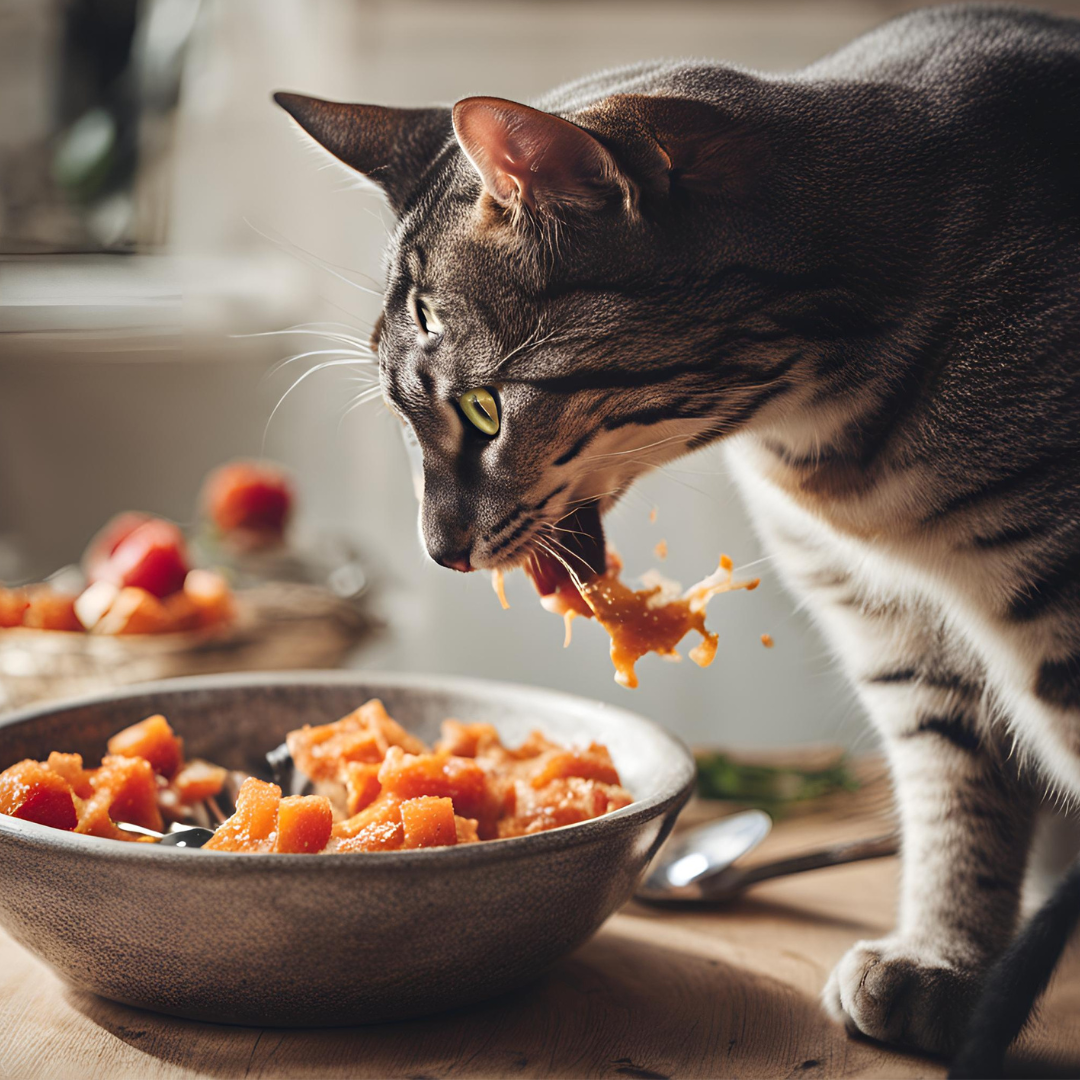How to deal with cat food ?

Cats, scientifically known as Felis catus, are small, carnivorous mammals that have been domesticated for thousands of years. They belong to the family Felidae, which also includes larger wild cats like lions, tigers, and leopards.
Cats are characterized by their agile and flexible bodies, sharp retractable claws, and keen senses. They have a compact size, typically weighing between 5 to 15 pounds, although there are some larger breeds. Cats have a wide variety of coat colors, patterns, and lengths, which contribute to their diverse and unique appearances.
In terms of behavior, cats are known for their independent and self-reliant nature. They are skilled hunters and possess excellent night vision, which allows them to stalk and capture prey. Cats have a strong sense of territory and mark their territory through scent marking and scratching.
Cats communicate through a combination of vocalizations, body language, and facial expressions. They use meowing, purring, hissing, and other sounds to express their needs and emotions. Their body language, including tail movements, ear positions, and posture, conveys their mood and intentions.
As pets, cats can form strong bonds with their human companions and provide companionship and affection. They are known for their grooming habits and spend a significant amount of time cleaning themselves. Cats also have the ability to learn and can be trained to perform various behaviors.
Proper care and nutrition are essential for the health and well-being of cats. They require a balanced diet, regular veterinary care, and a safe and stimulating environment.
When it comes to dealing with cat food, there are a few important considerations to keep in mind to ensure your cat’s health and well-being. Here are some tips:
Choose a high-quality cat food : Look for cat food that is specifically formulated for your cat’s age, size, and health needs. Read the labels and choose a brand that includes real meat as the primary ingredient, rather than fillers or by-products.
Consider your cat’s dietary needs : Cats have unique nutritional requirements, so it’s important to provide them with a balanced diet. Consult with your veterinarian to determine the appropriate type of cat food for your feline friend, whether it’s dry kibble, wet food, or a combination of both.
Provide fresh water : Cats need access to clean and fresh water at all times. Make sure to regularly refill their water bowl and clean it to prevent any contamination.
Avoid feeding human food : While it may be tempting to share your meal with your cat, it’s best to stick to a nutritionally balanced cat food. Some human foods can be toxic to cats, such as onions, garlic, chocolate, and caffeine.
Monitor your cat’s weight : Regularly check your cat’s weight and body condition to ensure they are maintaining a healthy weight. If you notice significant weight gain or loss, consult with your veterinarian to adjust their diet accordingly.
Introduce new foods gradually : When switching to a new cat food, it’s important to do so gradually to avoid upsetting your cat’s stomach. Mix a small amount of the new food with their current food and gradually increase the proportion over the course of a week.

Store cat food properly : To maintain the freshness and quality of cat food, store it in a cool, dry place, away from direct sunlight. Seal the bag or container tightly to prevent moisture and pests from getting in.
Remember, every cat is unique, and their dietary needs may vary. It’s always a good idea to consult with your veterinarian for personalized advice and recommendations based on your cat’s specific needs and health conditions.
Some common allergens in cat food that can cause allergies or sensitivities in cats include:
Grains: Ingredients such as wheat, corn, and soy are common allergens for cats.
Cats are obligate carnivores, and their digestive systems are not designed to process grains effectively. Grain-free or limited-ingredient diets may be suitable for cats with grain allergies.
Poultry: Chicken, turkey, and other poultry-based ingredients can cause allergies in some cats. This can include both the meat itself and by-products derived from poultry.
Fish: Fish, including salmon and tuna, can be allergenic for certain cats. Some cats may experience allergic reactions to the proteins found in fish, while others may have sensitivities to additives or preservatives often found in fish-based cat foods.
Beef: Beef is another common allergen for cats. Some cats may have an allergic reaction to the proteins found in beef, leading to digestive issues, skin problems, or other symptoms.
Dairy: While not usually a primary ingredient in cat food, dairy products can cause allergies or sensitivities in some cats. The lactose in milk, for example, can be difficult for cats to digest, leading to gastrointestinal upset.
It’s worth noting that allergies and sensitivities can vary from cat to cat. Some cats may have no issues with certain allergens, while others may develop adverse reactions. If you suspect that your cat has a food allergy or sensitivity, it’s important to consult with your veterinarian. They can help identify the specific allergen and recommend an appropriate diet or conduct further tests if needed.





